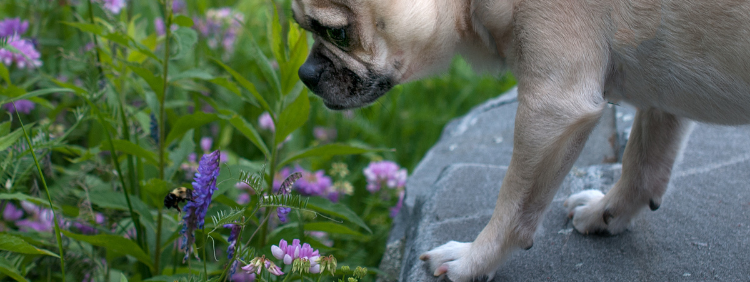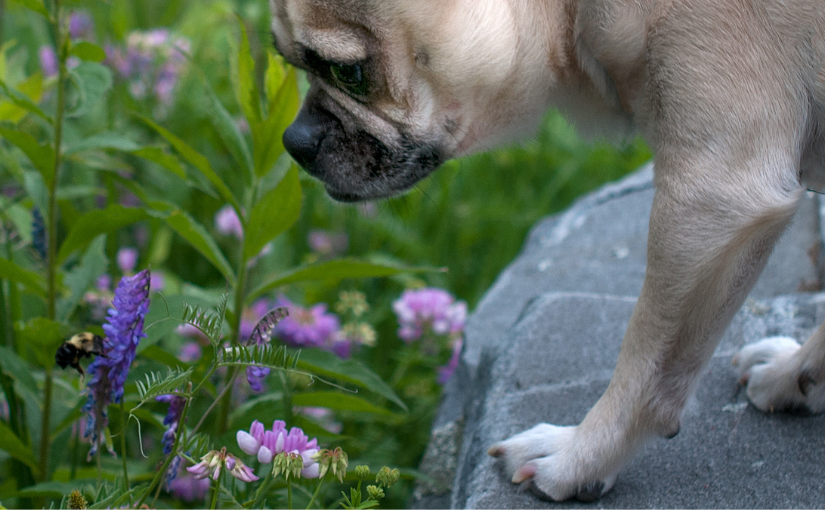
If you have ever had a bee sting, you know how painful it can be. A dog that gets stung can experience similar misery. In some cases, bee stings can even be dangerous to dogs. As a pet owner, it is your responsibility to take steps to prevent your dog from getting stung. This may include calling pest control services for professional bee removal .
Why Do Bees Sting Dogs?
Bees are generally not aggressive. They only sting in defence of themselves or their hives. Honeybees have barbed stingers that get stuck in the skin. When the bee attempts to fly away, the stinger pulls out, causing massive internal damage that results in the bee’s death. Bumblebees, on the other hand, have stingers without barbs. This means that they can sting multiple times without losing their lives from pulling the stinger out.
If a dog stumbles upon a bee’s nest, the insects will probably feel threatened and the dog will likely get stung. Otherwise, mere proximity to a dog should not make bees feel threatened while they are foraging away from the nest. However, if a dog makes physical contact with a bee, it might feel threatened and sting.
Where Are Dogs Most Likely To Get Stung?
Dogs investigate the world through their acute sense of smell. Therefore, the snout is the part of the dog’s body most likely to come in contact with a bee, so the dog is most likely to get stung in this area. A dog that gets stung by a bee may try to fight back by biting. If it is a species that is able to sting more than once, the dog may get stung inside the mouth.
Another place where a dog can get stung is its feet. If a bee is on the ground and the dog accidentally steps on it, the bee might sting to get the dog off. A curious dog may try to paw at a bee in addition to sniffing it, which may result in a sting.
How Can Bee Stings Be Dangerous to Dogs?
Bee stingers contain venom that, when injected into the skin, causes an acute inflammatory reaction. This is sufficiently aggravating in the short term that the person or animal threatening the bees promptly backs off but usually doesn’t cause long-term ill effects. However, some dogs have allergies to bee venom, just like some people do. In allergic individuals, bee stings can provoke a severe reaction that may be life-threatening.
While a dog that is not allergic should recover from a single bee sting, the venom can be toxic if your dog receives multiple stings. This may occur if your dog accidentally stumbles upon a hive and disturbs the bees.
The inflammatory response to a bee sting typically causes it to swell up. This can be dangerous if your dog is stung in the nose or mouth as the swelling could cause the airways to close up.
How Can You Protect Your Dog From Bee Stings?
A dog that is nosing around flower beds is more likely to have a chance encounter with a bee that results in a sting. If you have flower beds on your property, you should train your dog to stay out of them. You should also teach your dog commands such as “leave it,” “come,” and “heel” that help you control your dog’s behaviour and prevent it from getting into mischief.
However, the real danger of bee stings for dogs is getting multiple stings from coming upon a hive or nest unawares and then investigating further. You can prevent this by monitoring for nests of bees or wasps on your property and calling pest control services if you find any.
Trust Truly Nolen for Bee Removal
Removing bees and wasps from your property helps make it safer for all the members of your household as well as any visitors. Bee removal is one of many pest control services that we offer in Canada.
